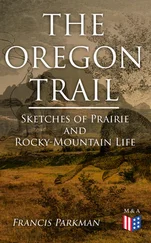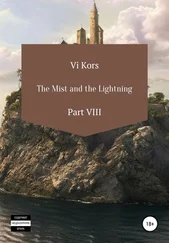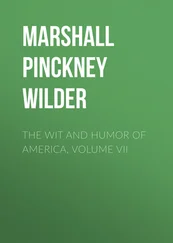Francis Parkman - France and England in N America, Part VII, Vol 1 - A Half-Century of Conflict
Здесь есть возможность читать онлайн «Francis Parkman - France and England in N America, Part VII, Vol 1 - A Half-Century of Conflict» — ознакомительный отрывок электронной книги совершенно бесплатно, а после прочтения отрывка купить полную версию. В некоторых случаях можно слушать аудио, скачать через торрент в формате fb2 и присутствует краткое содержание. Жанр: foreign_prose, История, foreign_edu, foreign_antique, на английском языке. Описание произведения, (предисловие) а так же отзывы посетителей доступны на портале библиотеки ЛибКат.
- Название:France and England in N America, Part VII, Vol 1: A Half-Century of Conflict
- Автор:
- Жанр:
- Год:неизвестен
- ISBN:нет данных
- Рейтинг книги:3 / 5. Голосов: 1
-
Избранное:Добавить в избранное
- Отзывы:
-
Ваша оценка:
- 60
- 1
- 2
- 3
- 4
- 5
France and England in N America, Part VII, Vol 1: A Half-Century of Conflict: краткое содержание, описание и аннотация
Предлагаем к чтению аннотацию, описание, краткое содержание или предисловие (зависит от того, что написал сам автор книги «France and England in N America, Part VII, Vol 1: A Half-Century of Conflict»). Если вы не нашли необходимую информацию о книге — напишите в комментариях, мы постараемся отыскать её.
France and England in N America, Part VII, Vol 1: A Half-Century of Conflict — читать онлайн ознакомительный отрывок
Ниже представлен текст книги, разбитый по страницам. Система сохранения места последней прочитанной страницы, позволяет с удобством читать онлайн бесплатно книгу «France and England in N America, Part VII, Vol 1: A Half-Century of Conflict», без необходимости каждый раз заново искать на чём Вы остановились. Поставьте закладку, и сможете в любой момент перейти на страницу, на которой закончили чтение.
Интервал:
Закладка:
60
After the old house was demolished, this door was purchased by my friend Dr. Daniel Denison Slade, and given by him to the town of Deerfield, on condition that it should be carefully preserved. For an engraving of "the Old Indian House," see Hoyt, Indian Wars (ed. 1824).
61
Governor Dudley, writing to Lord – on 21 April, 1704, says that thirty dead bodies of the enemy were found in the village and on the meadow. Williams, the minister, says that they did not seem inclined to rejoice over their success, and continued for several days to bury members of their party who died of wounds on the return march. He adds that he learned in Canada that they lost more than forty, though Vaudreuil assured him that they lost but eleven.
62
On the attack of Deerfield, see Williams, The Redeemed Captive Returning to Zion . This is the narrative of the minister, John Williams. Account of the Captivity of Stephen Williams, written by himself. This is the narrative of one of the minister's sons, eleven years old when captured. It is printed in the Appendix to the Biographical Memoir of Rev. John Williams (Hartford, 1837); An account of y edestruction at Derefd. feb r. 29, 1703/4 , in Proceedings of the Mass. Hist. Soc. , 1867, p. 478. This valuable document was found among the papers of Fitz-John Winthrop, governor of Connecticut. The authorities of that province, on hearing of the catastrophe at Deerfield, promptly sent an armed force to its relief, which, however, could not arrive till long after the enemy were gone. The paper in question seems to be the official report of one of the Connecticut officers. After recounting what had taken place, he gives a tabular list of the captives, the slain, and those who escaped, with the estimated losses in property of each inhabitant. The list of captives is not quite complete. Compare the lists given by Stephen Williams at the end of his narrative. The town records of Hatfield give various particulars concerning the attack on its unfortunate neighbor, as do the letters of Colonel Samuel Partridge, commanding the militia of the county. Hoyt, Antiquarian Researches , gives a valuable account of it. The careful and unwearied research of Mr. George Sheldon, the lineal descendant of Ensign John Sheldon, among all sources, public or private, manuscript or in print, that could throw light on the subject cannot be too strongly commended, and I am indebted to him for much valued information.
Penhallow's short account is inexact, and many of the more recent narratives are not only exaggerated, but sometimes absurdly incorrect.
The French notices of the affair are short, and give few particulars. Vaudreuil in one letter sets the number of prisoners at one hundred and fifty, and increases it in another to two hundred and fifty. Ramesay, governor of Montreal, who hated Hertel de Rouville, and bore no love to Vaudreuil, says that fifty-six women and children were murdered on the way to Canada,—which is a gross exaggeration. ( Ramesay au Ministre, 14 Novembre, 1704. ) The account by Dr. Ethier in the Revue Canadienne of 1874 is drawn entirely from the Redeemed Captive of Williams, with running comments by the Canadian writer, but no new information. The comments chiefly consist in praise of Williams for truth when he speaks favorably of the Canadians, and charges of lying when he speaks otherwise.
63
John Williams, The Redeemed Captive . Compare Stephen Williams, Account of the Captivity , etc.
64
The small stream at the mouth of which Williams is supposed to have preached is still called Williams River.
65
Stephen Williams, Account of the Captivity , etc. His father also notices the incident.
66
The name Macquas (Mohawks) is always given to the Caughnawagas by the elder Williams.
67
The Iroquois are well known to have had superstitions in connection with sexual abstinence.
68
Williams remarks that the Seminary had also been burned three years before. This was the fire of November, 1701. See "Old Régime in Canada," 451.
69
Note of Mr. George Sheldon.
70
The elder Dudley speaks with great warmth of Courtemanche, who, on his part, seems equally pleased with his entertainers. Young Dudley was a boy of eighteen. "Il a du mérite," says Vaudreuil. Dudley to Vaudreuil, 4 July, 1705; Vaudreuil au Ministre, 19 Octobre, 1705.
71
In 1878 Miss C. Alice Baker, of Cambridge, Mass., a descendant of Abigail Stebbins, read a paper on John Sheldon before the Memorial Association at Deerfield. It is the result of great research, and contains much original matter, including correspondence between Sheldon and the captives when in Canada, as well as a full and authentic account of his several missions. Mr. George Sheldon has also traced out with great minuteness the history of his ancestor's negotiations.
72
The above is drawn mainly from extracts made by Miss Baker from the registers of the Church of Notre Dame at Montreal. Many of the acts of baptism bear the signature of Father Meriel, so often mentioned in the narrative of Williams. Apparently, Meriel spoke English. At least there is a letter in English from him, relating to Eunice Williams, in the Massachusetts Archives, vol. 51. Some of the correspondence between Dudley and Vaudreuil concerning exchange of prisoners will be found among the Paris documents in the State House at Boston. Copies of these papers were printed at Quebec in 1883-1885, though with many inaccuracies.
73
Stephen W. Williams, Memoir of the Rev. John Williams , 53. Sermon preached at Mansfield, August 4, 1741, on behalf of Mrs. Eunice, the daughter of Rev. John Williams; by Solomon Williams, A.M. Letter of Mrs. Colton, great granddaughter of John Williams (in appendix to the Memoir of Rev. John Williams ).
74
I remember to have seen Eleazer Williams at my father's house in Boston, when a boy. My impression of him is that of a good-looking and somewhat portly man, showing little trace of Indian blood, and whose features, I was told, resembled those of the Bourbons. Probably this likeness, real or imagined, suggested the imposition he was practising at the time. The story of the "Bell of St. Regis" is probably another of his inventions. It is to the effect that the bell of the church at Deerfield was carried by the Indians to the mission of St. Regis, and that it is there still. But there is reason to believe that there was no church bell at Deerfield, and it is certain that St. Regis did not exist till more than a half-century after Deerfield was attacked. It has been said that the story is true, except that the name of Caughnawaga should be substituted for that of St. Regis; but the evidence for this conjecture is weak. On the legend of the bell, see Le Moine, Maple Leaves, New Series (1873), 29; Proceedings of the Mass. Hist. Soc. , 1869, 1870, 311; Hist. Mag. 2d Series , ix. 401. Hough, Hist. St. Lawrence and Franklin Counties , 116, gives the story without criticism.
75
The earlier editions of this book follow, in regard to Samuel Gill, the statements of Maurault, which are erroneous, as has been proved by the careful and untiring research of Miss C. Alice Baker, to whose kindness I owe the means of correcting them. Papers in the archives of Massachusetts leave no doubt as to the time and place of Samuel Gill's capture.
Читать дальшеИнтервал:
Закладка:
Похожие книги на «France and England in N America, Part VII, Vol 1: A Half-Century of Conflict»
Представляем Вашему вниманию похожие книги на «France and England in N America, Part VII, Vol 1: A Half-Century of Conflict» списком для выбора. Мы отобрали схожую по названию и смыслу литературу в надежде предоставить читателям больше вариантов отыскать новые, интересные, ещё непрочитанные произведения.
Обсуждение, отзывы о книге «France and England in N America, Part VII, Vol 1: A Half-Century of Conflict» и просто собственные мнения читателей. Оставьте ваши комментарии, напишите, что Вы думаете о произведении, его смысле или главных героях. Укажите что конкретно понравилось, а что нет, и почему Вы так считаете.












